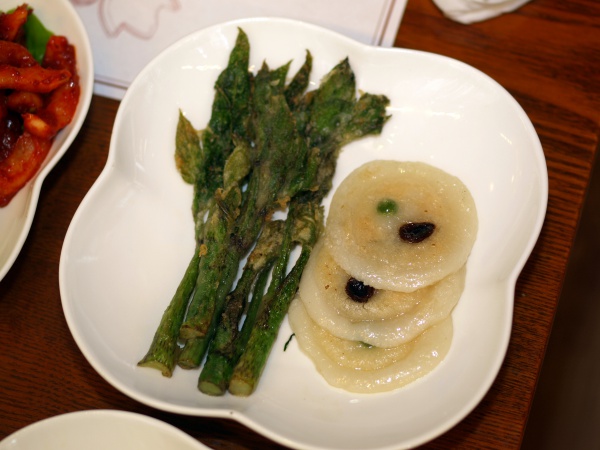Facts About Bugak
Bugak is a delightful type of vegetarian twigim (deep-fried dish) in Korean cuisine. It is prepared by deep-frying dried vegetables or seaweed that have been coated in chapssal-pul (glutinous rice flour paste) and then re-dried. Bugak is often enjoyed as banchan (side dish) or anju (snacks served with alcohol).
The ingredients for bugak vary widely, including green chili peppers, perilla leaves, camellia leaves, chrysanthemum leaves, burdock leaves, tree of heaven shoots, potatoes, gim (seaweed), and dasima (kelp). For frying, perilla oil or soybean oil are commonly used.
Although bugak is relatively rare in Korean cuisine, it is closely associated with Korean temple cuisine, renowned for its vegetarian offerings.
There are numerous varieties of bugak, each featuring different ingredients. Some popular types include:
- Dangeun-bugak: Made with carrots.
- Dasima-bugak: Made with kelp.
- Deulkkae-songi-bugak: Made from perilla inflorescence.
- Dongbaek-ip-bugak: Made with camellia leaves.
- Dureup-bugak: Made from angelica tree shoots.
- Eumnamu-sun-bugak: Made from castor aralia shoots.
- Gajuk-bugak: Made with tree of heaven shoots.
- Gamja-bugak: Made with potatoes.
- Gamnnip-bugak: Made with persimmon leaves.
- Gim-bugak: Made from laver (a type of seaweed).
- Gochu-bugak: Made from green chili peppers.
- Gukhwa-ip-bugak: Made with chrysanthemum leaves.
- Kkaennip-bugak: Made from perilla leaves.
- Mosi-ip-bugak: Made with ramie leaves.
- Ogapi-ip-bugak: Made from eleuthero leaves.
- Parae-bugak: Made with green laver.
- Ssuk-bugak: Made from Korean mugwort.
- Ueong-ip-bugak: Made with burdock leaves.
Each type of bugak presents its own unique flavor and texture, making it a versatile and tasty addition to any meal.

 North Korea
North Korea